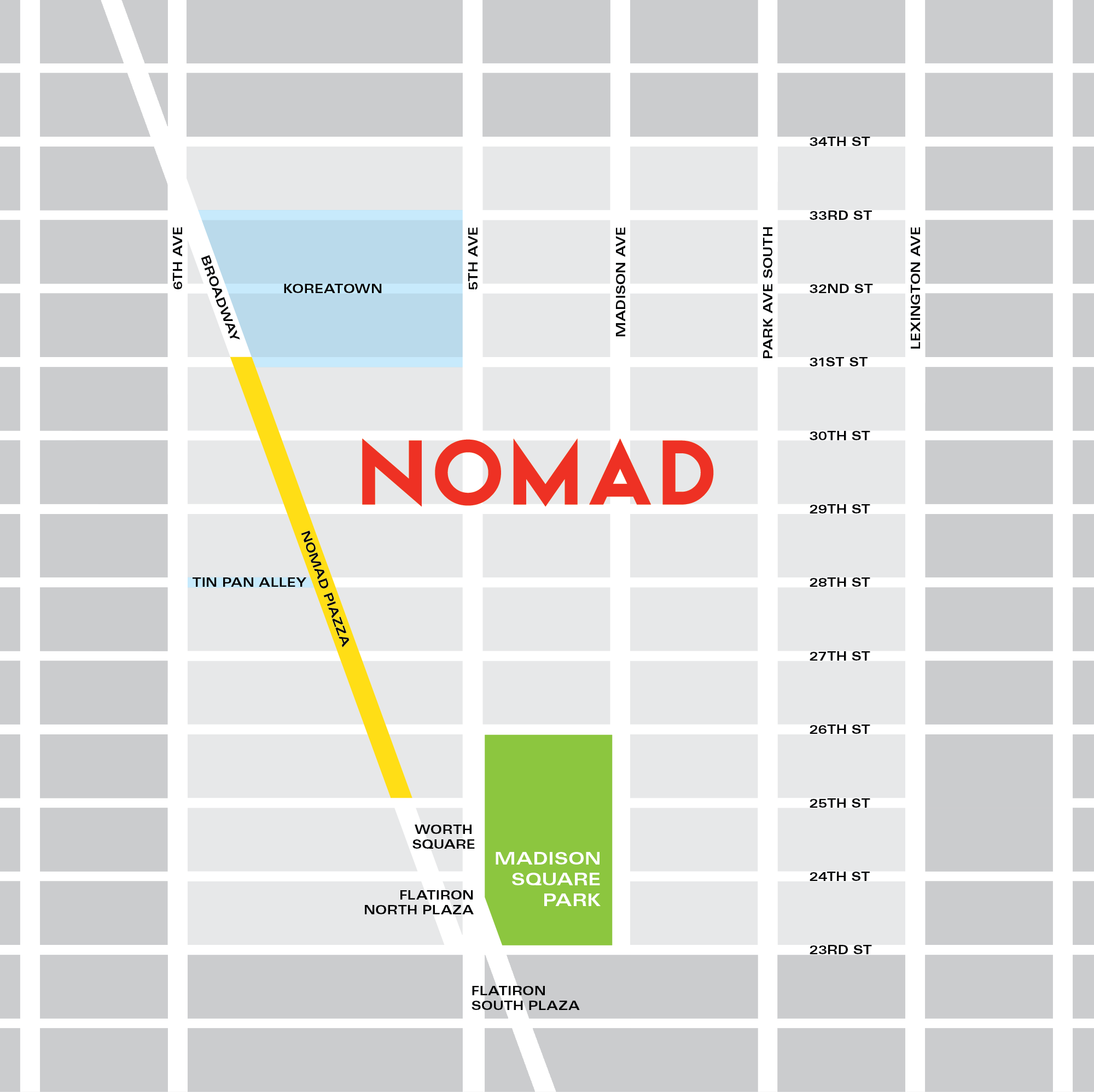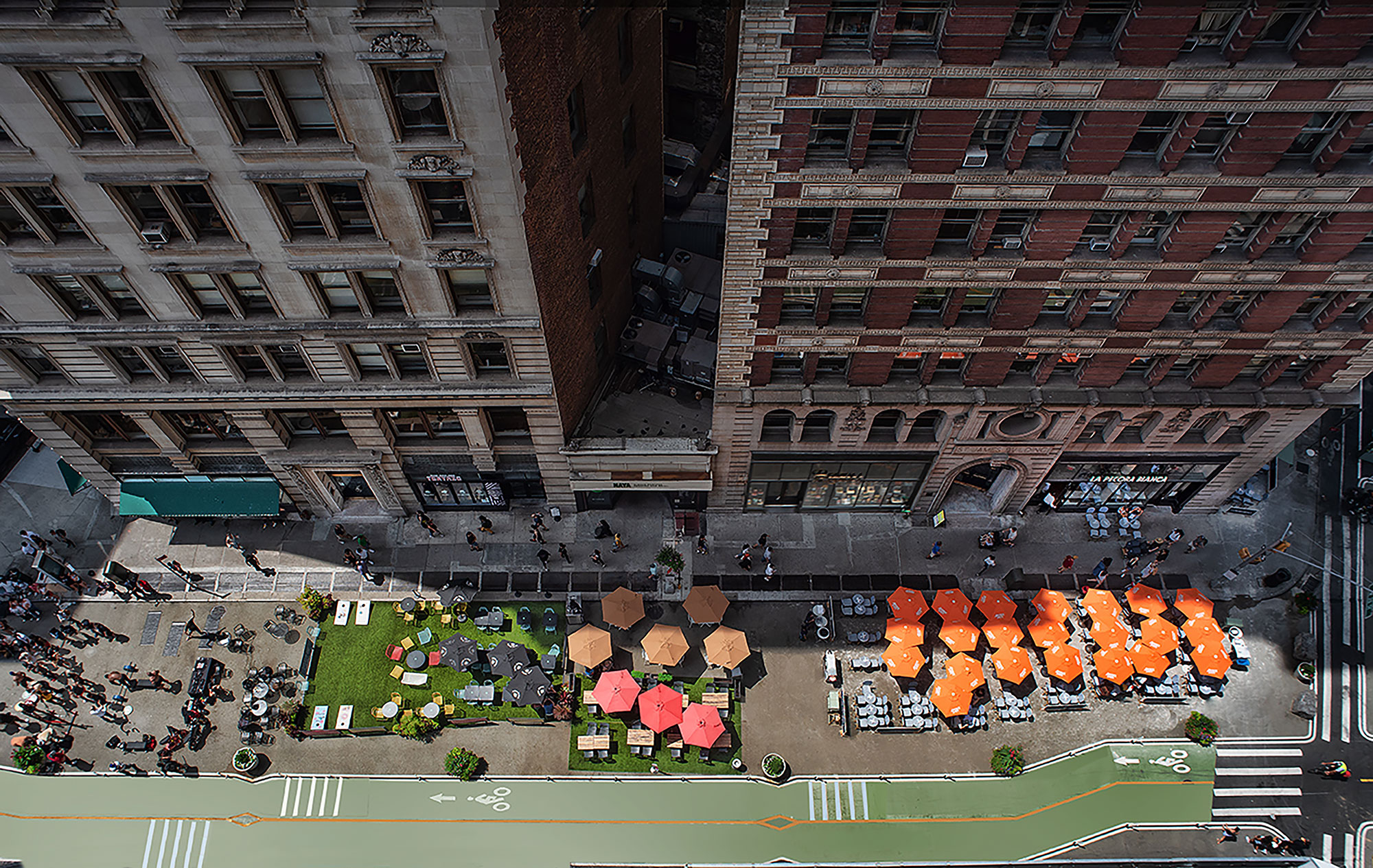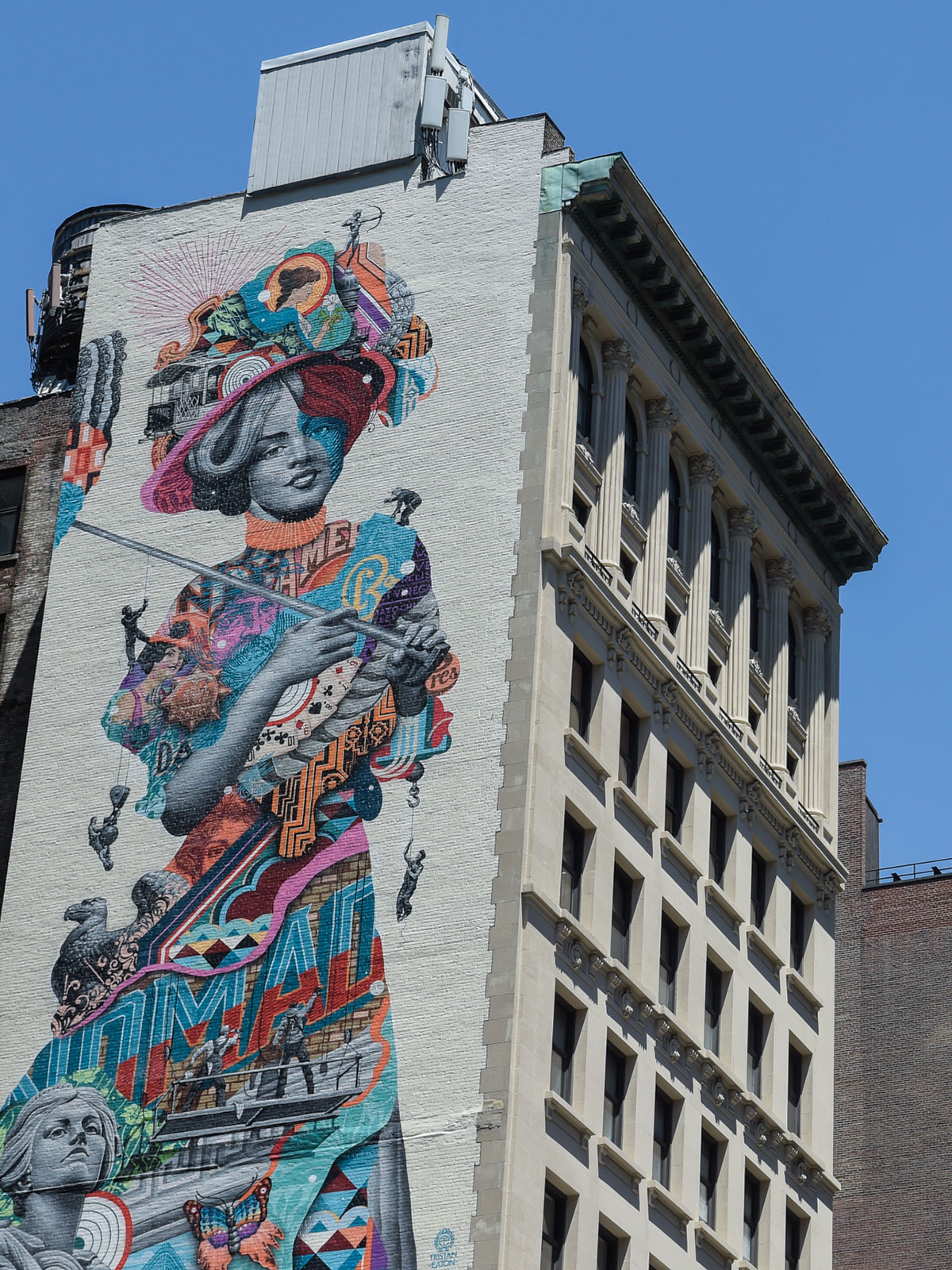About NoMad
While NoMad is state of mind and spirit, and is not confined by boundaries, its heart is between 23rd Street and 34th Street, and between Lexington Avenue and Seventh Avenue. The New York Times coined its name in 1999, shortly after New York City formally established the Madison Square North Historic District, which lies in the center of No (North) Mad (Madison Square).

NoMad is New York City’s quintessential live–work–play neighborhood. You’ll find all that makes New York an exciting place for visitors and those who live, work, and play here. Its streets are steeped in history and lined with handsome buildings, world-class hotels, wonderful restaurants, exciting nightlife, and unique retail shops. The NoMad Piazza has become a highlight destination for meeting friends, grabbing a bite, shopping, or simply strolling through NYC’s hottest neighborhood.
Centrally located in Manhattan with easy access to the entire city, NoMad is a hub of New York’s creative, design, culinary, and tech industries and buzzes with a unique energy, day and night. Those who know the area, know there’s no place like NoMad.

NoMad Piazza
NoMad Piazza is a vibrant destination where foodies enjoy a variety of distinctive cuisines from some of New York’s best-known restaurants and fashionistas hunt for the latest styles and vintage design. It’s where art lovers discover new artists and hidden treasures. And those looking to pamper themselves find a range of treatments and services.

Afternoons flow into evenings as neighborhood denizens and visitors spill into the streets of NoMad Piazza. With plenty of outdoor space to explore and enjoy the best of New York City, it’s another reason Manhattan’s NoMad neighborhood is the quintessential live–work–play destination.
The New York Times and The Chicago Tribune have highlighted the NoMad Piazza in How to Staycation in Six American Cities.
The Inception of NoMad Piazza
In 2020, NoMad Piazza quickly became a popular pedestrian venue in Manhattan on Broadway between 25th Street and 31st Street. It materialized when the New York City Mayor and the Department of Transportation introduced its Open Streets initiative to allow for greater social distancing across the five boroughs.
The Open Streets program on Broadway, managed by the Flatiron NoMad Partnership, was among the first of its kind in the city and includes NoMad Piazza. This distinctive attraction is supported in part by The NoMad Alliance. The NoMad Piazza is now part of the NYC DOT’s Broadway Vision.
History of NoMad
NoMad first became a crossroad of the city at the end of the 18th century when the main route to New England split from Broadway at what is now 23rd Street. In the Gilded Age at the end of the 19th century, the District became the center of New York’s social and cultural life. It was the hub of theatre, entertainment, dining, shopping, and nightlife and attracted famous people of the day, from the likes of Oscar Wilde, Teddy Roosevelt, Mark Twain, George M. Cohan, Diamond Jim Brady, Stanford White, Evelyn Nesbit, Herman Melville, Charles Dickens, J.P. Morgan and Thomas Edison, to presidents and foreign dignitaries.
From the 1880s to the 1930s, 28th Street between Broadway and Sixth Avenue was transformed into a melting pot for musicians and gave rise to the concept of the “hit song.” Tin Pan Alley, now part of NoMad, became the birthplace of countless classics of American popular music.
West of Broadway, the underside of New York was more in evidence. Satan’s Circus, as the area was called, boasted nearly fifty brothels, famous bars that offered shooting galleries and prostitutes, and betting parlors catering to the rich and poor. It is this extraordinary mix of so many types of people living different but parallel lives that is the essence of NoMad — a diverse world where life is rich and exciting.

NoMad Today
Since the outset of the 21st century, NoMad has rapidly recaptured its central place in the city. Much of the credit for the area’s resurgence is due to the legacy of its fine architecture and the gem that is Madison Square Park. The park offers a respite from the bustle of the city with beautiful landscaping, historic sculptures, and a full schedule of art, music, family, and food events that provide tremendous vitality to the entire NoMad area.
Today, NoMad is home to an increasing to an increasing number of high-profile names and businesses. Whether you’re coming to work, stay, eat, or be entertained, there is a wealth of options to choose from. NoMad’s hotels are setting a standard for the city and the world, and some of the country’s greatest chefs, such as Daniel Humm from Eleven Madison Park, José Andrés from Zatinaya, Markus Glocker from Koloman, and Andrew Carmellini from Café Camellini, are serving up meals in NoMad’s not-to-be-missed restaurants. The range of dishes available challenges the imagination and spans many nationalities. There are one-of-a-kind shopping experiences, world class galleries, and concept stores, and museums like no other. Truly, there’s no place like NoMad.
